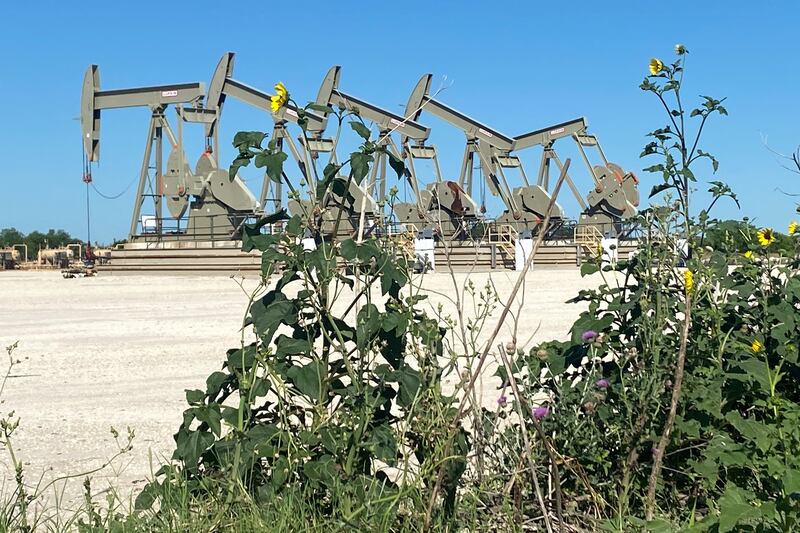Oil prices steadied on Wednesday after rising by more than 2 per cent the previous day amid prospects of tightening crude supply, increasing fuel demand and a softer US dollar.
Brent, the benchmark for two thirds of the world’s oil, was trading 0.13 per cent higher at $79.50 a barrel at 3.34pm UAE time while West Texas Intermediate, the gauge that tracks US crude, was up 0.27 per cent at $75.03 a barrel.
On Tuesday, Brent settled 2.20 per cent higher at $79.40 a barrel while WTI was up 2.52 per cent at $74.83.
“Crude prices are getting a boost as expectations grow for the oil market to remain tight despite all lingering growth concerns,” said Edward Moya, senior market analyst at Oanda.
Oil prices have a “solid floor” in place, and it will take a “lot to go wrong for prices to lose [their] footing”, he said.
On Tuesday, the US Energy Information Administration raised its gross domestic product growth estimates for the American economy, citing higher consumer spending and investment.
The EIA, which is the statistical arm of the US Department of Energy, now expects the world's largest economy to grow by 1.5 per cent this year, up from its previous forecast of 1.3 per cent.
The US economy, which slowed sharply from January to March this year amid high interest rates, is expected to expand 1.3 per cent in 2024, up from the EIA’s previous 1 per cent forecast.
The EIA also expects Brent crude prices to average $80 a barrel in the fourth quarter before rising to $84 next year as global crude stocks decline over the next five quarters.
The Brent price averaged $75 a barrel in June, unchanged from May “as ongoing concerns regarding weakening global economic conditions continued to limit expectations for global oil demand growth, which countered upward price pressure from tighter near-term oil supplies”, the EIA said.
“The reduction in expected near-term oil supplies was the result of the Opec+ extended crude oil production cuts … and an extension of voluntary cuts through August announced by Saudi Arabia,” the government body said.
The EIA said it expects the production cuts and rising demand to increase prices going forward and is forecasting a 1.8 million bpd growth in global crude consumption this year and an increase of 1.6 million bpd in 2024.
China and India – two of the world’s largest energy importers – will represent most of the demand growth, it said.
Crude demand in China, the world's second-largest economy, is expected to rise by 800,000 bpd this year and by 400,000 bpd in 2024.
India's crude consumption is set to experience a 300,000 bpd growth in both the current year and the coming year.
Meanwhile, US crude stocks, an indicator of fuel demand, rose by three million barrels last week, according to the American Petroleum Institute.
Fears of further of interest rate increases have weighed on crude futures.
“Labour market data out of the UK yesterday [has] raised bets on further tightening from the Bank of England in the coming months, helping drive mortgage rates to 15-year highs,” said Daniel Richards, Mena economist at Emirates NBD.
British wages excluding bonuses were 7.3 per cent higher in the three months to May than a year earlier, matching the highest growth rate on record, according to the Office for National Statistics.
Average regular wages were the same as during the previous three months and the joint highest since records began in 2001.
The ONS said the UK jobless rate jumped to 4 per cent for the three months to May, from 3.8 per cent in the previous three-month period, driven by long-term unemployment.
Economists had predicted a 3.8 per cent increase in the latest quarter.






